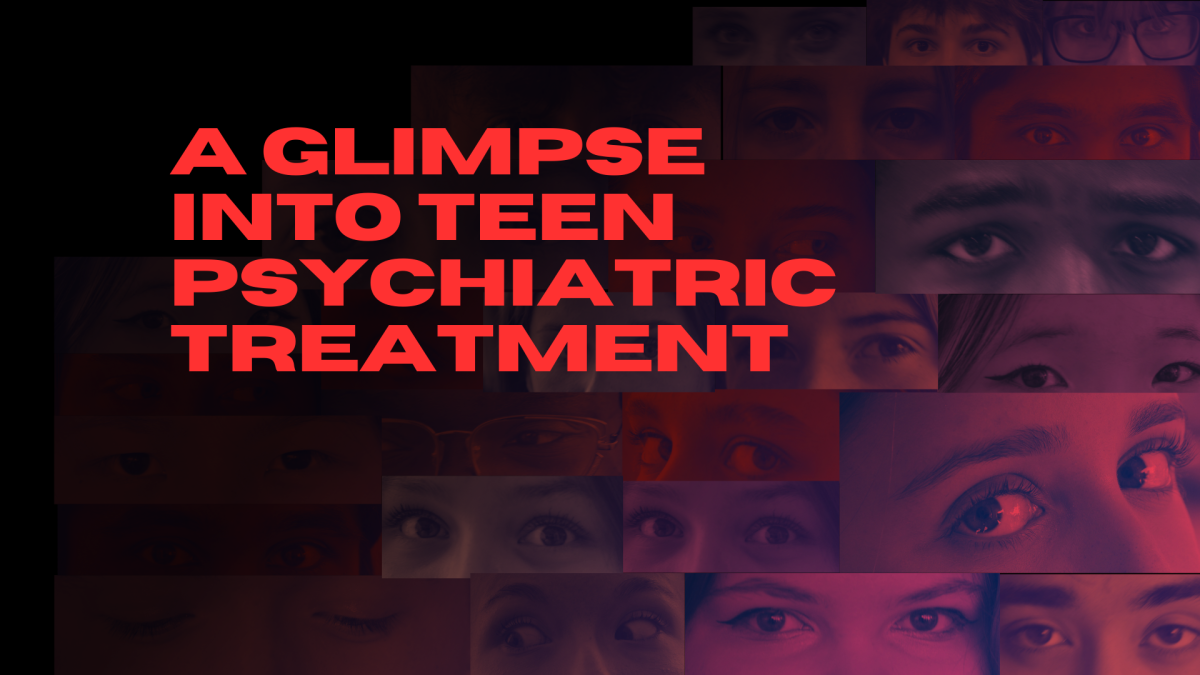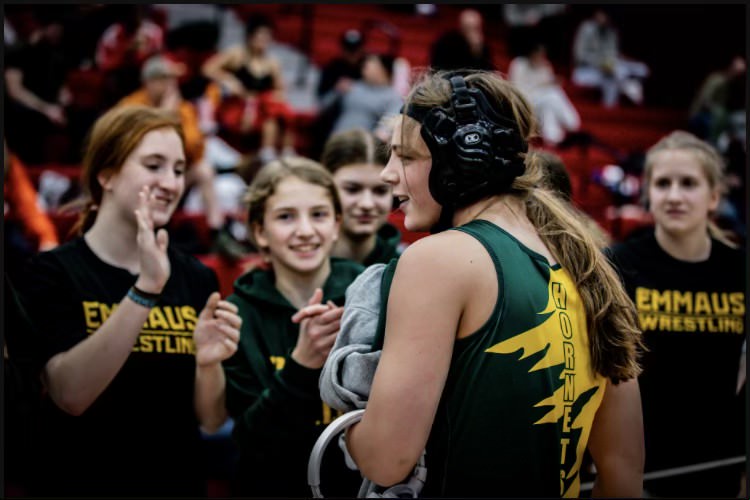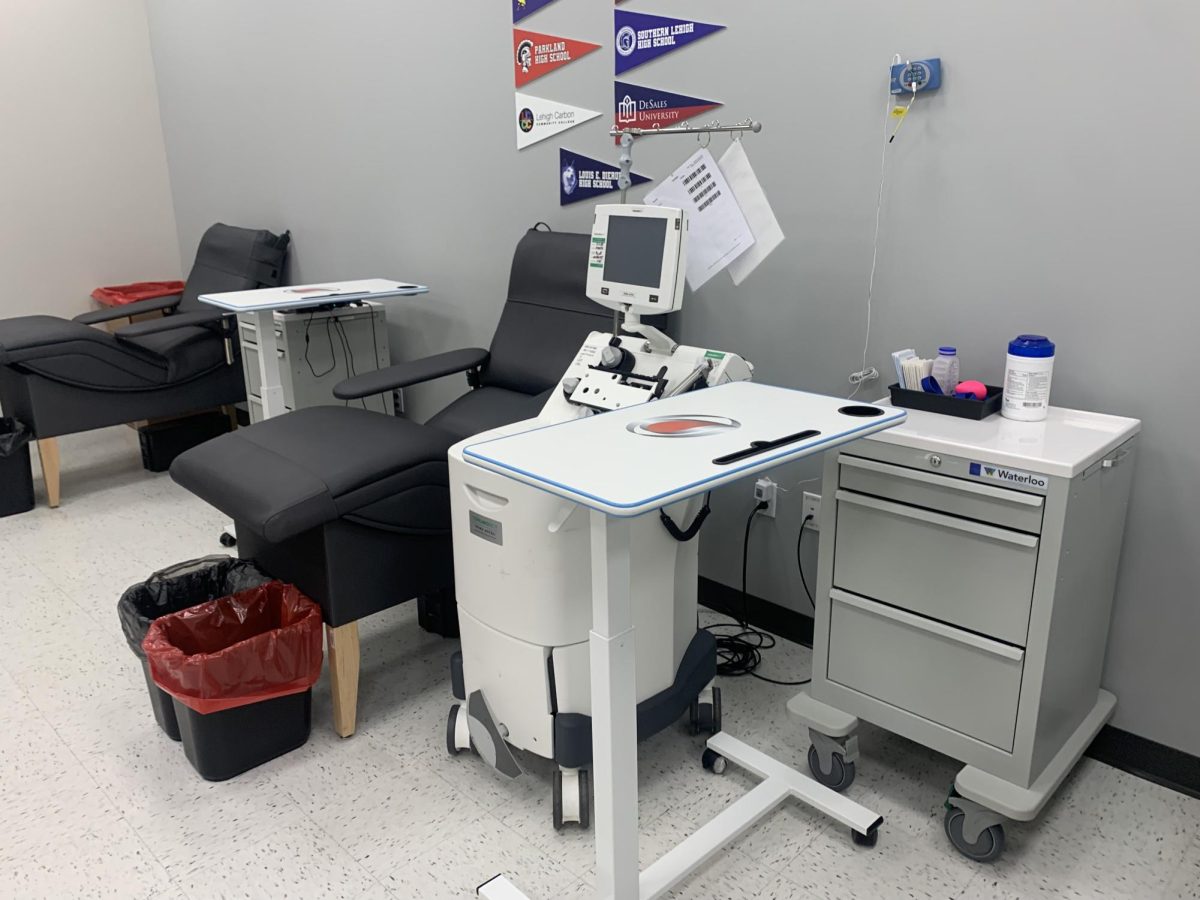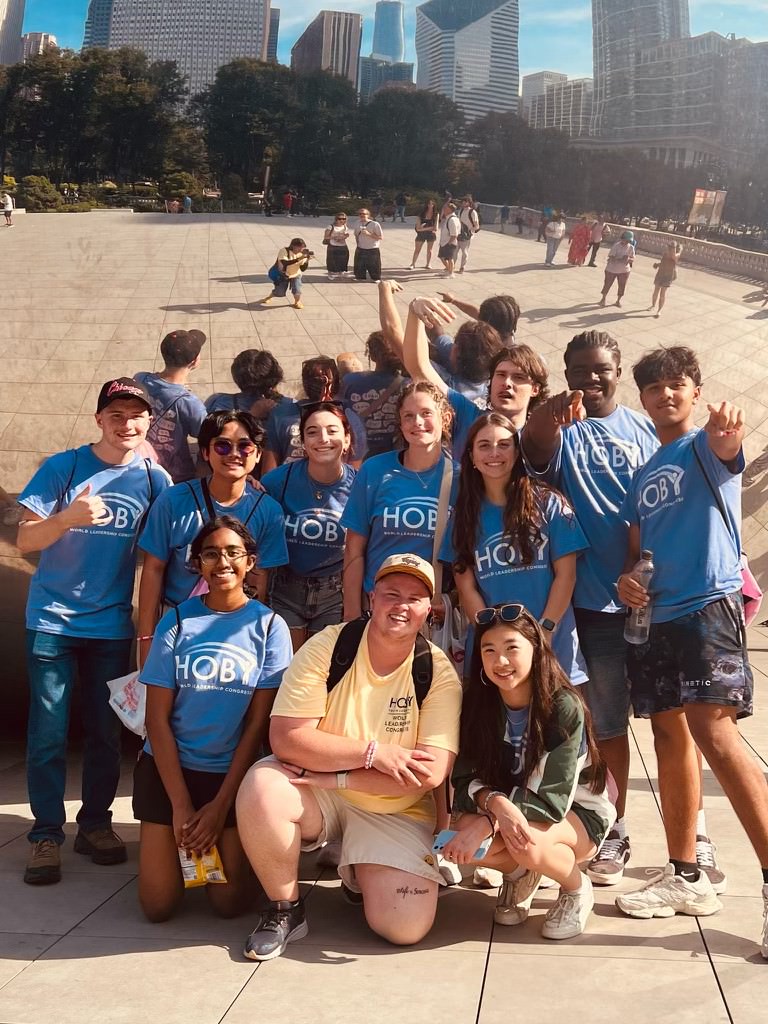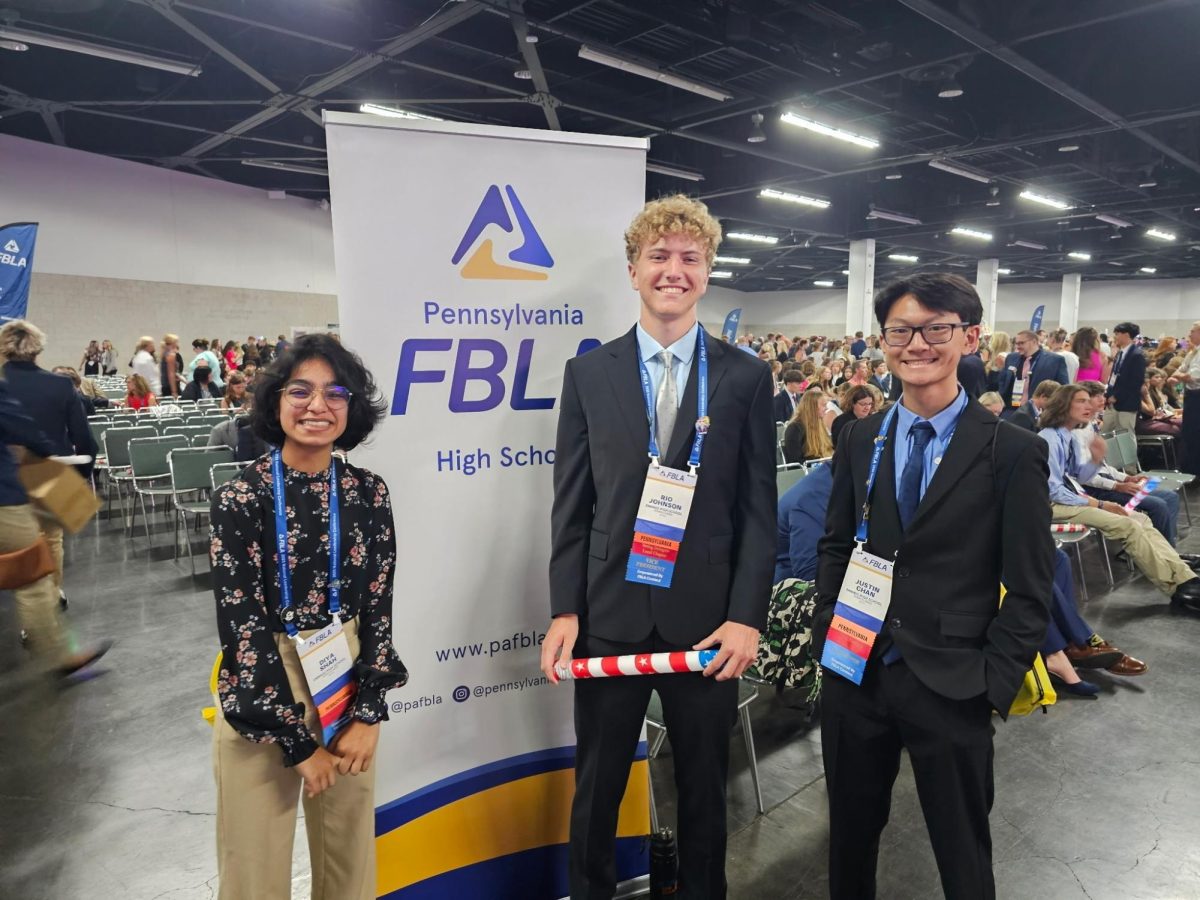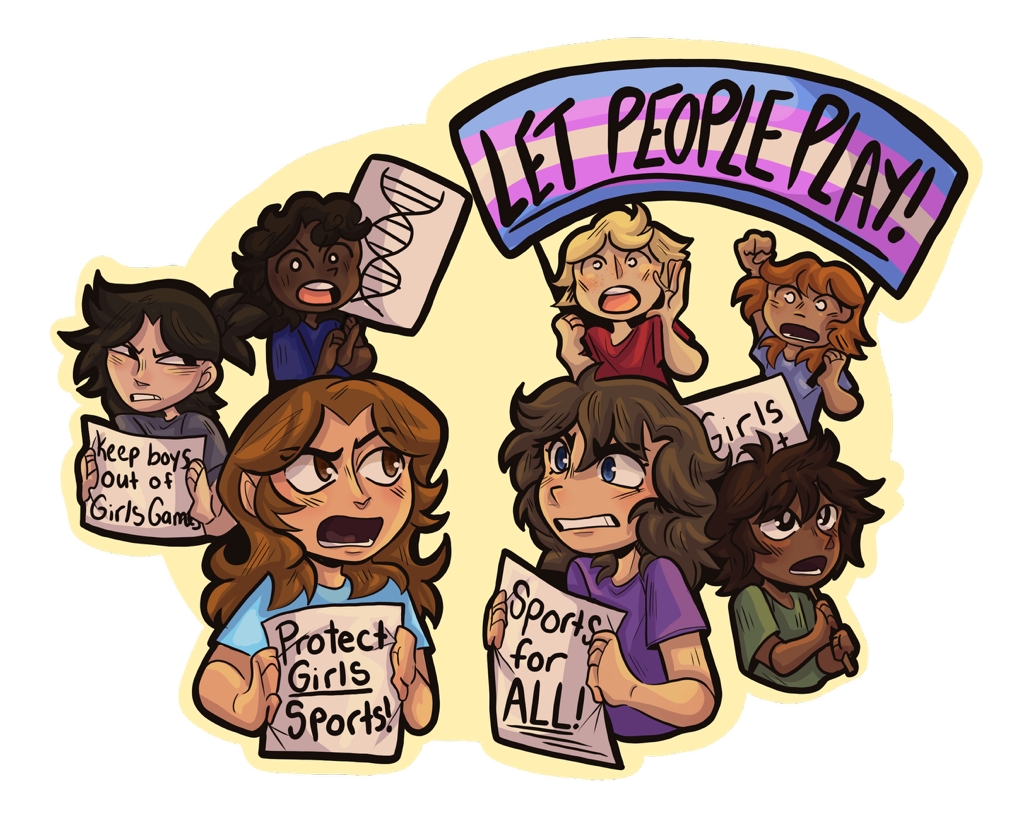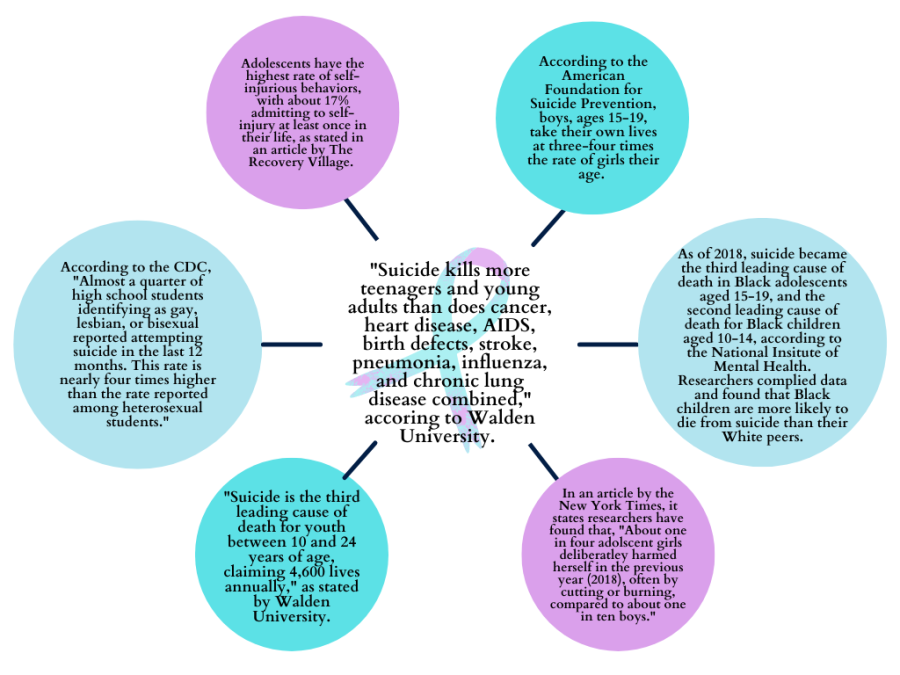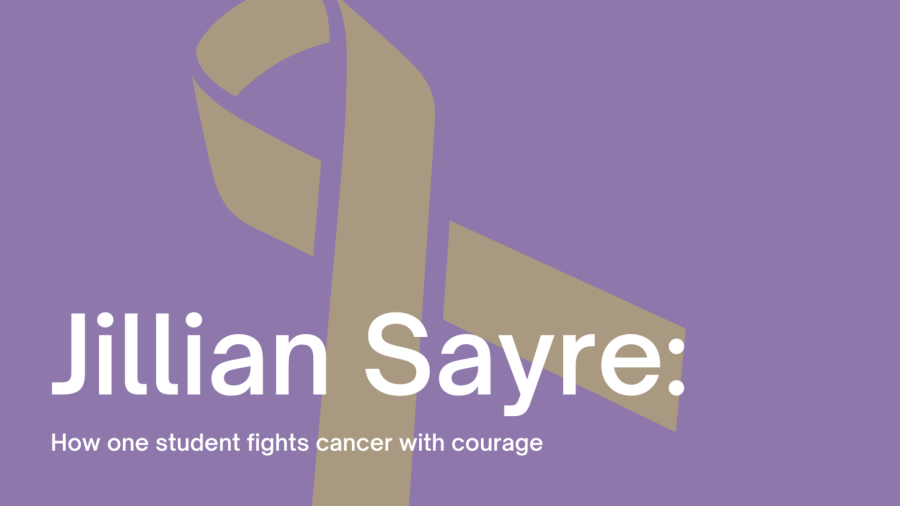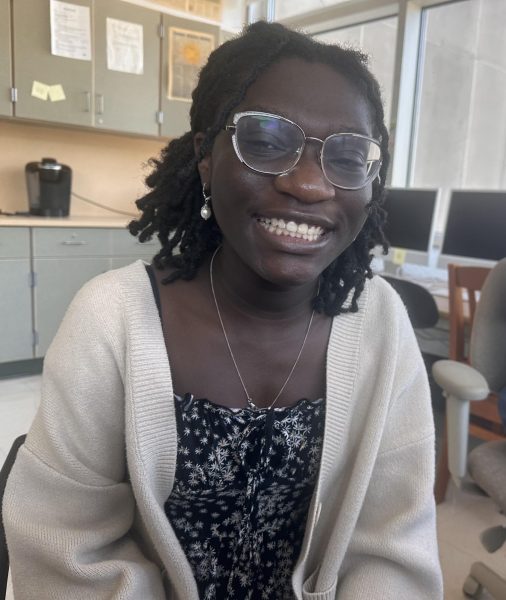Previously appeared in our May print issue.
It is hard to put down a device that gives you immediate access to everything happening in the world. You are connected to everything and everyone — with just a few clicks, is a beautiful array of endless content and possibilities. However, with these digital connections comes the irony of tearing in-person communication apart.
Emmaus High School senior Sienna, whose name was changed for privacy, remembers the anxiety following her through the halls and the whispers floating through the air. She tried her best to ignore the bullying she was receiving online — blocking peers on social media and saving anything that rubbed her the wrong way — but once it escalated, she was plagued with thoughts of people following and recording her as she walked to class.
“It was in the apps. It was in-person, it was everywhere,” Sienna said. “I couldn’t escape it, and it wasn’t really because of the situation on social media itself, it was because of the anxiety that carried over.”
Today, social media plays a key role in how society functions. From instant communication to product promotion, everything can be shared online easily. People can use social media positively, but what can get overlooked is how quickly negativity can form when these privileges are abused.
According to a poll The Stinger conducted to analyze how social media affects students, taken by 312 students, 64 percent of students say social media has negatively affected their life in some way.
Cyberbullying, or the use of electronic communication to bully a person by sending messages of an intimidating or harmful nature. According to a Pew Research Center survey conducted April 2022, 46 percent of U.S. teens, ages 13-17, report experiencing cyberbullying behaviors.
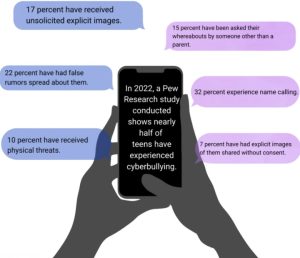
The question is whether or not these harmful behaviours can be lessened or eliminated.
Sienna was in the midst of turmoil last year as her peers on social media platforms — mainly Instagram — were spreading rumors about her, all because of a falling out with a friend. According to Sienna, it felt as if this friend and her friend group took advantage of her vulnerability and struggling mental health to team up against her.
She received posts of Instagram stories, usually with captioned pictures of others gossiping about her. These came from group chats that she was not a part of and several people resposted them.
These negative posts tarnished Sienna’s reputation and were targeted towards her even though she wasn’t always directly named in the posts.
“Most of it was just passive-aggressive — like backhanded,” Sienna said. “It’s all stuff that they would never say to your face. It’s just stuff that they can get away with behind the screen.”
EHS psychology teacher Danielle Walsh has seen students be more comfortable with saying whatever they want online as opposed to in-person.
“People are very comfortable putting something in a text message or posting something, and they’re not comfortable saying that to somebody’s face,” Walsh said. “I think sometimes what happens with social media is we forget that the words are still there and they still have the same impact.”
Even though someone might be hiding behind a screen, the words still reach the intended target, and without physical interactions, cyberbullying victims might be left with many questions and few answers.
This was true for Sienna, who remained confused with the people she dealt with as the problems escalated. They never came up and complained in person, and while she knew who they were, she would barely even see them throughout the school day, only online. The lack of physical contact limited Sienna in how to handle the situation.
“I was worried that people were going to take a picture,” Sienna said. “I was worried that people were going to record me walking in the hallway. I was worried people were going to text their friends, just stuff that I just wanted to avoid.”
Lehigh University Associate Journalism and Communications Professor Haiyan Jia believes cyberbullying is more opportunistic than traditional bullying.
“We talk about school bullying, usually there’s an end time. Hopefully, when you go back home, you’re in a safer space, but cyberbullying differs from that,” Jia said. “It can happen anywhere at any time, which means when you go back home the bullying messages follow you. If you travel, social media is always going to be there.”
Considering this, it can be difficult for those involved in these situations to control and prevent rumors from spreading.
Sienna, who experienced something similar at first ignored it and blocked anyone that was causing issues. She would also save things like messages, stories, photos, etc.
“If it rubbed me the wrong way, I would screenshot it and I would keep it, just in case I needed to send it to someone, like the school or show my parents,” Sienna said. “But I would never engage. It was all very one-sided.”
Unfortunately the problems continued to escalate — and so did the fear she felt. The anxiety carried over into school as she became worried that the cyberbullying would worsen far beyond her control.
Sienna eventually reached out to administration and the school board for help and continued for about seven months. According to Sienna, the school could not do anything about the rumors being spread online because the threats were not made on school property.
“It just got so out of hand, and I did not feel protected. I didn’t feel safe,” Sienna said. “I would show them the stuff that people were saying or texting and they would say, ‘Well it’s online. We can’t really do anything about it.’”
According to EHS Principal Beth Guarriello, what the school can do when a student is being cyberbullied varies depending on what technology is being used — whether it is via a school-owned device or on a personal device.
“If they’re using our [school issued] devices for anything [cyberbullying], then we can get them on that,” Guarriello said. “If it’s through their phones, but happening during the school day, depending on the severity, we can look at different parts of our Code of Conduct whether it’s harassment, or bullying, or inappropriate comments, or racial and ethnic intimidation.”
However, if a student like Sienna is cyberbullied through personal devices, a different set of procedures must be followed. Additionally and according to Sienna’s case, if it is a situation happening outside of school, it is more of a police matter than it is a school matter. The school encourages families to get into contact with local law enforcement if their child is being cyberbullied.
EHS resource officer and Emmaus police officer Craig Blose, explains for something to be done by the police, a crime must occur.
“It really comes down to whether or not a law was broken. There’s many times that we review the evidence, and it may be inappropriate, but it’s not criminal,” Blose said.
For cyberbullying the primary crime committed is harassment, according to Blose. There are different levels of harassment but the legal definition is a repetitive course of conduct that serves no legitimate purpose. There is also a provision in the crimes code with harassment that deals with push, shove, and strike if the cyberbullying becomes physical.The punishment is usually a fine that the parents pay for the guilty student.
Blose’s job is to deal with the law, not student disputes, unless those disputes become physical and threatening in nature — although he would never turn a student in need away; however, there are many steps a student must go through before they are able to speak with him.
“It’s very difficult for me to handle things that happen outside of school. Sometimes it does come to my desk or sometimes it’s intermingled, meaning that a student here is being bullied not only inside school but outside of school,” Blose said. “Nowadays things are differ-
ent. Almost all of the bullying is done by social media.”
“You never want it to get to the point where it becomes a crime.” Sienna, frustrated with what can be done in terms of cyberbullying, said. Since at that point it would be too late.
In addition, many adolescents want more to be done in terms of handling cyberbullying. According to Pew Research half of teens think banning users who bully or placing criminal charges against cyber bullies would help a lot in reducing the cyberbullying teens face on social media. These are issues that many want addressed. How can cyberbullying be limited in a world where bullying is as old as time and where social media will always be present
“The problem with cyberbullying is that it’s so anonymous. You don’t have to look anyone in the eye and say a nasty thing straight to them. You type it into a phone,” Guarriello said. “You don’t see their reaction. You don’t know if they saw it or if they didn’t see it. It’s so anonymous. It’s so devoid of humanity.”
In Sienna’s case, once the bullying became too much for her to handle, she switched to VESPA after she heard about it from a friend and talked to her guidance counselor. Since a switch to VESPA is recommended at the end of a marking period or semester, Sienna transferred shortly after midterms concluded.
After going online, Sienna went through her accounts and removed and unfollowed anyone that could potentially cyberbully or cause her harm.
It took several months for her mental health to recover but since switching schools she hasn’t dealt with cyberbullying.
Unfortunately, escaping cyberbullying by switching schools or moving is not a reality for many victims of cyberbullying. According to Lehigh University Professor Jia, there is another sinister reality of cyberbullying.
“Another really devastating aspect is that the messages have basically an internal lifespan. It can haunt you forever, and we’ve seen cases like that where kids transfer to a different school or different region of the country. The content still remains on social media and is going to track them down,” Jia said. “So I think cyberbullying, compared to traditional forms of bullying, is more pervasive, is more permanent, and does not go away easily.”
Jia is not very optimistic about a solution because social media is inescapable and cyberbullying is too. The legal protection of adolescents and teenagers is lacking in this category, though there are movements working towards the possibility of cyberbullying prevention.
“We’ve seen big tech companies have been rolling out applications specifically for kids. [They] have more specific rules and guidelines. We also have been seeing how state after state, school after school, are adopting policy in terms of regulating access to technology,” Jia said. “So all of this is pointing to this possibility of combating cyberbullying. But again, like we discussed before, cyberbullying happens at any time. Only regulating access at school would not solve this problem.”
Despite her experiences, Sienna still uses social media, but is more mindful and careful about it. She holds firm opinions due to what she went through the previous year.
“I think social media is not very beneficial or helpful for anyone. I think it’s beneficial in a creative sense, but I think it’s very damaging and very unhealthy, even in not upfront ways,” Sienna said.
When Sienna attended in-person school, she remembers hating the cell phone policies at first, until she realized that it was actually “amazing” because of the problems it limits.
She notes the kids fight but with the new cell phone policies in place, issues with phones and bullying are more limited.
“This is exactly what the world needs, and these kids don’t need to be on their phone. They’re in school to learn,” Sienna said.
Adolescents tend to communicate through screens more often than not and while schools’ new policies limit this, the problem persists outside of school hours.
Considering online communication allows for plenty of conscious effort to go into what is being posted, when teens post something hurtful or false, there is a high chance they know what they are doing. People may think communication is easy through a screen, but many fail to realize that in-person communication is just as valuable as online communication.
Research conducted by New Horizons Wellness Center shows “that heavy social media users often report difficulties with face-to-face communication, as they become more comfortable with the controlled and edited nature of online interactions.”
Assistant Professor of Corporate Communication at Penn State, Lehigh Valley, Dr. Beth Michalec, uses a social media detox with her students to get them to step away from social media and reflect on how they use their time.
“I think students become, through that social media detox, a lot more aware of their own social media habits, because they felt so disconnected from the world. Not having the immediate gratification of just grabbing a phone and quickly checking through their social media apps, they didn’t feel as dialed in and connected anymore,”Michalec said.
According to Jia, adolescents experience bullying now more than ever because of the development of social media and the accessibility of electronics. Noting this, she emphasizes the importance of looking for and noticing when there is an issue that needs to be addressed.
“Victims of cyberbullying need to really understand what they are experiencing and call for help, and when you recognize this problem, when you know kids are calling for help. The rest of us need to be more ready and prepared to respond to it,” Jia said.
During school hours there has been forms of bullying, but the presence of social media has changed it. Despite the strict cell phone policies, harmful things are still being shared online, and according to The Stinger’s poll, when asked if they have ever seen a school fight video
shared online 79.4 percent of students reported yes.
There is not a lot that can be done to prevent the toxicity that is constantly spread online, unless people are willing to change the way they treat others and themselves on these platforms.
Learning to properly communicate is essential to combating cyberbullying. Marketing and Communication Specialist at Penn State, Lehigh Valley Mary Kate Maguire believes there is a simple remedy for this.
“If you’re authentically you online, and you’re not harassing other people, you’re going to find that group of people that support you and love you and engage with you in a healthy way online,” Maguire said.
In her virtual schooling, Sienna is relieved that she does not have to be around bullying. She is happy she has learned how to limit the hatred that can be found on social media. Most importantly she is happy that she has real genuine connections with people in her life.



